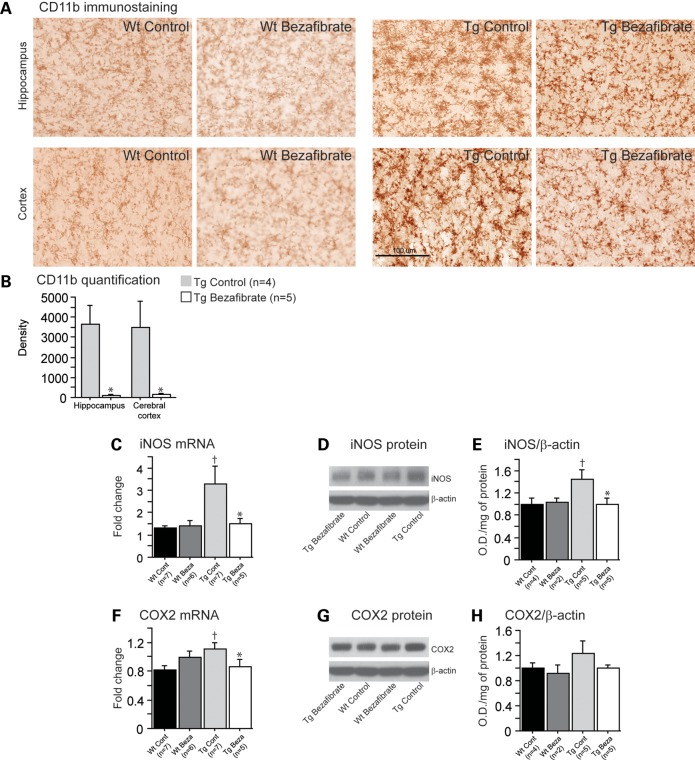Figure 3.
Bezafibrate treatment reduced inflammation in P301S mice. (A) Immunohistochemical staining with the CD11b antibody in the hippocampus and cerebral cortex. (B) Intensity (density) of CD11b in P301S mice fed a control diet (Tg Control, n = 4) and P301S mice fed a bezafibrate diet (Tg Bezafibrate, n = 5; scale bar: 100 μm). Administration of bezafibrate significantly reduced microglial activation in the brains of P301S mice (unpaired t-tests, *P < 0.05). Levels of iNOS (C) and COX2 (F) mRNA in wild-type mice fed a control diet (Wt Control, n = 7), wild-type mice fed a bezafibrate diet (Wt Bezafibrate, n = 6), P301S mice fed a control diet (Tg Control, n = 7) and P301S mice fed a bezafibrate diet (Tg Bezafibrate, n = 5). Western blots of iNOS (D) and COX2 (G) protein and their quantifications by optical densities normalized to β-actin (E and H) in wild-type mice fed a control diet (Wt Control, n = 4), wild-type mice fed a bezafibrate diet (Wt Bezafibrate, n = 2), P301S mice fed a control diet (Tg Control, n = 5) and P301S mice fed a bezafibrate diet (Tg Bezafibrate, n = 5). P301S mice had significantly elevated inflammation relative to their wild-type littermates (Fisher's PLSD, †P < 0.05). After bezafibrate treatment, both iNOS and COX2 mRNA and protein expression were significantly decreased in P301S mice (Fisher's PLSD, *P < 0.05).

